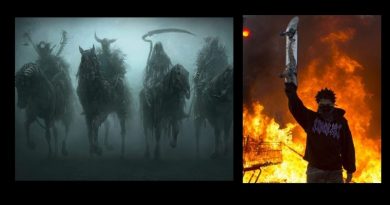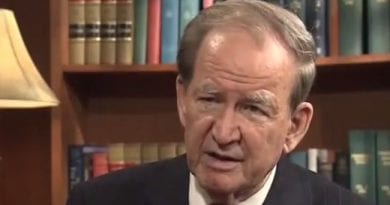The Office of Oblation or Proskomide
On Thurday February 18, 2021, at the Chapel of Sir Anthony Mamo Oncology Centre, we had the grace of having celebrated on the chapel’s altar the Eucharist with the Byzantine Rite. In fact, I had the joy of concelebrating with Papas Martin Zammit, the actual parish priest of the only Greek Catholic parish named for Our Lady of Damascus of Valletta in Malta.
The patron saint of cancer patients, my fellow brother in the Capuchin Order St Leopold Mandic, offered his life for the unity between the Catholic and the Eastern Churches separated from Rome. Thus, it was fitting that an essential part of the hospital chaplaincy that is carried out in this hospital includes the Eastern lung of Christians. As a matter of fact, Papas Martin comes once a month or more so that together we conduct services for the healing of the patients and their families as well as to pray for the well being of the hospital staff, their families and communities.
Before the Eucharist both Catholic and non-Catholic Eastern Christians, have what they called the Office of Oblation. The Greek technical word is Proskomide. The service, since the days of the early Church, has to do with the preparation for the Sacramento of the Holy Eucharist or Communion in the Divine Liturgy. On that day we were going to celebrate together the liturgy of St John Chrysostom.
It needs to be said that the Office of Oblation is an important requirement before the Divine Liturgy is celebrated. The structure of the service is really interesting. It kicks off with the Priest who comes before the Oblation table (which we call the Prothesis. This table is used for the Office of Oblation and is located to the left of the Holy Altar table). Then he bows and after making three revernces he thrice quitely prays: O God, be gracious unto me a sinner, and have mercy upon me. Following this prayer he reads this subsequent prayer: Prepare O Bethlehem, Eden is open for all. Adorn yourself O Efratha for, in the cave, the Tree of Life has blossomed forth from the Virgin. Her womb has been revealed as a noetic Paradise wherein lies the divine seedling. If we partake of it we shall live, if not, then we shall die as Adam. Christ is born, restoring the once fallen image.
Then, the Priest takes the bread in his hands, lifts it to his forehead with the loaf’s seal upward, and says: You have redeemed us from the curse of the law by your precious blood. By being nailed to the Cross and pierced with a lance, You have become a fountain of immortality for all people. Glory to You, our Savior. Then the Priest goes on by saying: Blessed is our God always, now and forever, and to the ages of ages. Amen.
Upon finishing this prayer the priest begins cutting the bread. While taking the bread in his left hand and the spear (or lonche in Greek which is used to cut the bread. It symbolizes the spear that the soldier used to pierce the side of our Lord when our Lord was hanging on the Cross) in his right hand, he makes the sign of the Cross over the seal by using the lance and thrice he says: In remembrance of our Lord and God and Savior Jesus Christ. This is taken from Luke 22:19.
Initially, he moves to the central portion of the seal which has the inscription ICXC NIKA (Jesus Christ Conquers) in its four corners. This portion is called the Amnos, or the Lamb, which represents our Lord who takes on the sins of the world. The Lord is called Amnos or Lamb, since like a lamb, He accepted His death with utmost humility and without even protesting. While cutting along the right side of the Amnos, the priest says quoting Isaiah 53:7: As a sheep He was led to the slaughter. Whereas along the left side of the Amnos, the priest continues saying from Isaiah 53:7: And as a blameless lamb, dumb before his shearer, He opens not His mouth. Then, along the top side of the Amnos, the priest says from Isaiah 53:8: In His humiliation His judgment was taken away. While along the bottom side of the Amnos, the priest says from Isaiah 53:8: And who shall declare his generation? Following this the priest infixes the lance in the bottom of the bread underneath the Amnos. He elevates the Amnos up, and while removing it, he says from Isaiah 53:8: For His life is raised up from the earth.
The priest then puts the Amnos upon the Paten (or as we in Greek know it as Diskarion. This is the raised plate wherein the bread is put. It represents the manger of Bethlehem) makes a deep crosswise cut on the back of the Seal without cutting through it and says from the gospel of St. John 6:51; 1:29: Sacrificed is the Lamb of God Who takes away the sin of the world, for the life and salvation of the world. By your crucifixion, O Christ, tyranny was abolished and the power of the enemy was trampled upon, for it was neither an angel nor a man, but the Lord Himself who saved us. Glory to you.
The Amnos is then turned so the seal is upward, and infixes with the lance the section signalled NI, quoting again from the gospel of St. John 19:34: One of the soldiers pierced his side with a lance and immediately there came out blood and water. And he who saw it bore witness, and his witness is true. The priest then pours wine and a little water into the Chalice, blesses it and says: “Blessed is the union of your holy gifts, always, now and ever and unto ages of ages. Amen”
To the right of the Amnos (on the left of the bread as the priest faces it) is the portion for the Mother of God. From this second portion, the priest cuts out the triangle with the letter M and Θ for Μother of God (in the Greek Language), and puts it on the Paten. This is in commemoration of our Most Blessed Lady, the Theotokos, Mother of God, Panagia, to whom we pray to intercede for us to her Divine Son. As the priest places this portion to the right of the Amnos, he says: The Queen stood at your right hand, clothed in a garment wrought with gold and arrayed in diverse colors (Ps. 44:10).
From the third prosphoron (In Greek singular for bread is Prosphoron or for plural is Prosphora. It is the Holy bread offered for the preparation of the Sacrament of the Holy Eucharist) cuts out the nine small triangles. He puts them on the Paten on the left side of the Amnos, in the same position as they were on the bread. These nine triangles symbolize the nine orders of saints and the angels in heaven, as follows:
- In honor and remembrance of the Archangels Michael and Gabriel and of all the heavenly bodiless powers.
- Of the honorable glorious Prophet and forerunner Baptist John; of the holy glorious Prophets Moses and Aaron, Elias, and Elisha, David and Jesse; of the three holy Children; Daniel the Prophet, and of all the holy Prophets.
- Of the holy, glorious, and praiseworthy Apostles Peter and Paul, of the twelve and the seventy, and of all the holy apostles and those equal to the apostles.
- Of our Fathers among the saints, the universal, great teachers and hierarchs: Basil the Great, Gregory the Theologian, and John Chrysostom; Athanasios and Cyril, John the Merciful, Patriarchs of Alexandria, Nicholas of Myra, Spyridon Bishop of Trimythous and Nektarios of Pentapolis the wonderworkers and all the holy hierarchs.
- Of the holy protomartyr and Archdeacon Stephen, of the holy glorious great martyrs, George the Victorious, Demetrios the Myrobletes, Theodore of Tyron, Theodore Stratelates, the priest martyrs Polycarp, Haralambos and Eleftherios; the women martyrs, Thecla, Barbara, Anastasia, Katherine, Kyriaki, Photini, Marina, Paraskeve, Irene, and all the holy Martyrs.
- Of our Venerable and God-bearing fathers Anthony the Great, Euthymios, Paisios, Savvas, Onouphrios, Athanasios of Athos, Dionysios of Olympos, and of all those who have throughout the ages excelled in asceticism.
- Of the holy, glorious, and wonder-working unmercenaries: Cosmas and Damian, Kyros and John, Panteleimon and Ermolaos and of all the holy unmercenaries.
- Of, the holy and righteous ancestors, Joachim and Anna, of Joseph the Betrothed and Symeon the Theodochos, of the Saints (the saints of the day) whose memory we commemorate today and of all the Saints.
- Of our Father among the Saints John Chrysostom, Archbishop of Constantinople or Saint Basil the Great, Archbishop Caesarea of Capadocia.
Then the priest cuts two portions from the same prosphoron. From the one he commemorates the living by taking out particles and from the other takes out particles to commemorate the dead. The congregation gives the names of the living and dead for whom they want the priest to pray. The priest commemorates the living by taking out their particles from the bread, calling each name that has been given to him to be remembered at this time, and places them below the “Amnos” and to the right of the “Amnos” (left of clergy). To the left of the “Amnos” (right of the clergy), the dead are commemorated. The last portion is for the Priest who prays for his own salvation.
When the Priest finishes the Office of Oblation, he places upon the Paten the Asteriscos (or the star cover that is placed on the Paten. It is made of metal so that it can support and prevent the small veil from coming in contact with the bread. It symbolizes the star of Bethlehem). The Paten with the Asteriscos and the Chalice are covered with distinct veils. Both are then covered with a larger veil, which is called the Aer (or a veil that covers both the Paten and the Chalice. It symbolizes the linen cloth in which Joseph and Nicodemus placed the most Sacred Body of our Lord when they took it down from the Cross. It also symbolizes the Loftiness and Glory of Jesus Christ and his Saving Grace by which His Church is covered and protected and even the gates of hell shall not prevail against it (Mt. 16:18). Under the Aer, seperate smaller veils cover the Paten with the Asteriscos and the Chalice. They are often in the shape of a cross, with the four points coming down as flaps over the Paten or the Chalice). The Office of Oblation is concluded with a prayer by the priest offered to our Lord, asking Him to bless the gifts of bread and wine, accept them in remembrance of those who offer them, and keep the priest pure during the celebration of the Divine Liturgy.
As I joyfully assisted Papas Martin during the Proskomide, I had the joy of learning some interesting spiritual insights. First, I learned that Christ is the restorer of our fallen image. Second, Jesus is represented as the Tree of Life who has blossomed forth from the Virgin Mary. Third, by shedding his blood for us Christ liberated us from the bondage of the law and became for us a fountain of immortality. Fourth, Jesus is the spotless victim like the lamb who is taken to the shearer which does not resist his killer. Fifth the Office of Oblation or Proskomide is biblical. What the priests says during this entire service is taken literally from both the Old and the New Testament. Sixth, even the priest prays for his salvation during the Eucharistic liturgy. He too needs God’s constant grace to celebrate the Eucharist in a state of grace. Seventh, it is only by humility that we can celebrate the Eucharistic Liturgy. If humility is not there we cannot behold Our Saviour. Eight, the Eucharist is the Heavenly Communion of Mary, the Angels and the Saints in, with and through Christ Jesus, in the Holy Spirit as one offering gift of praise to the Father.
The Proskomide or the Office of Oblation is a powerful testimony that theologically is not simply done biblically but also, under the guidance of the Holy Spirit, poetically.
Fr Mario Attard OFM Cap





